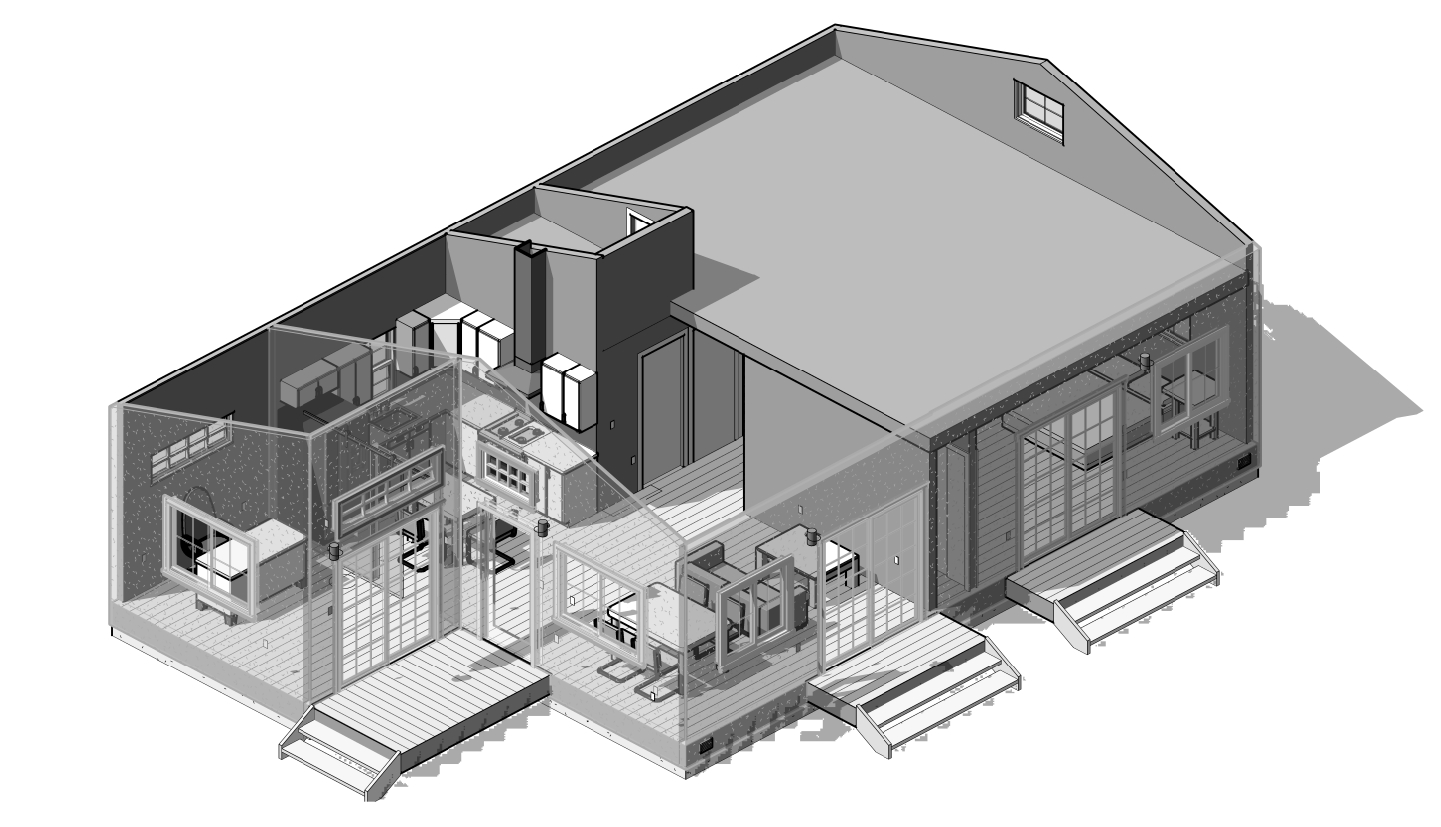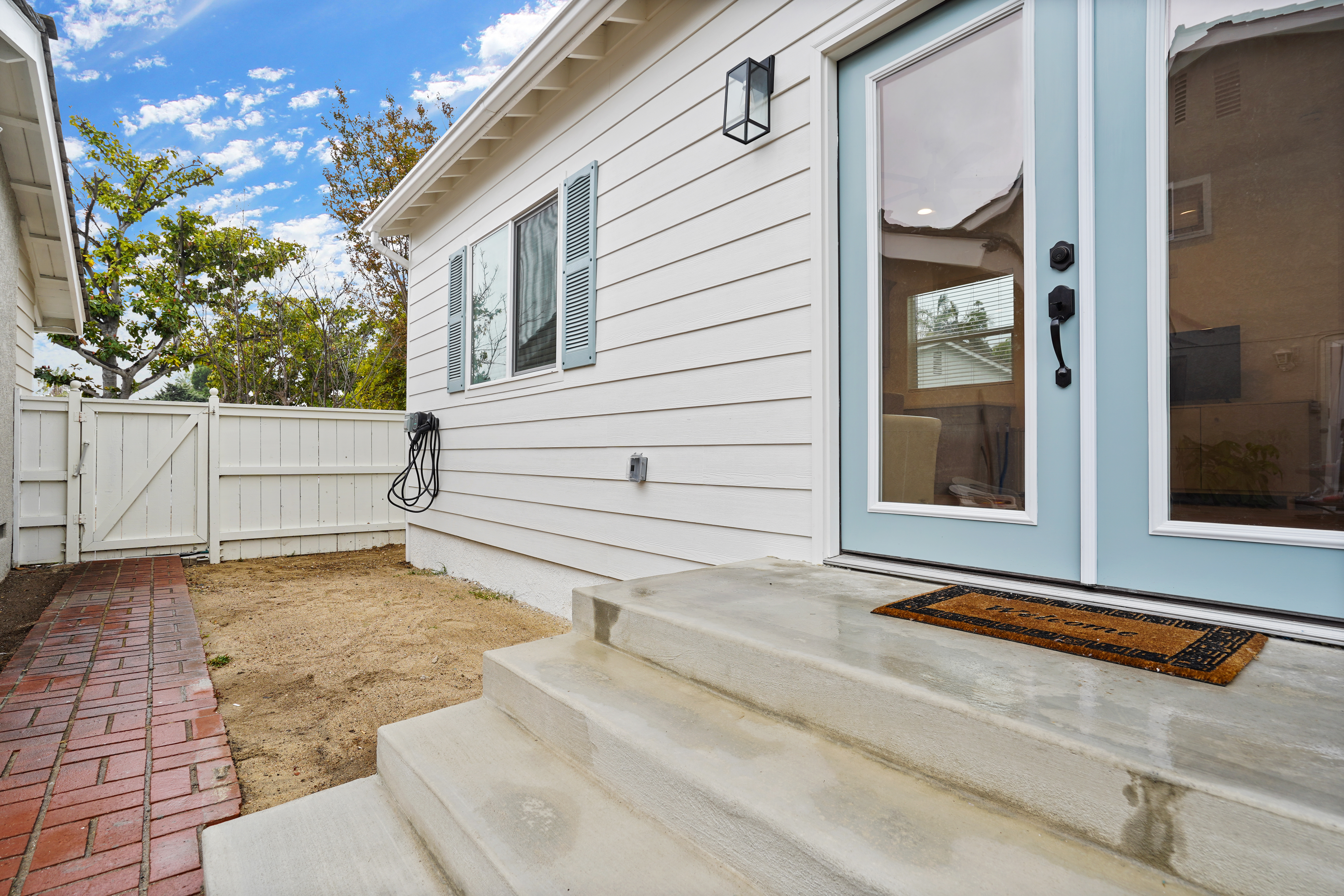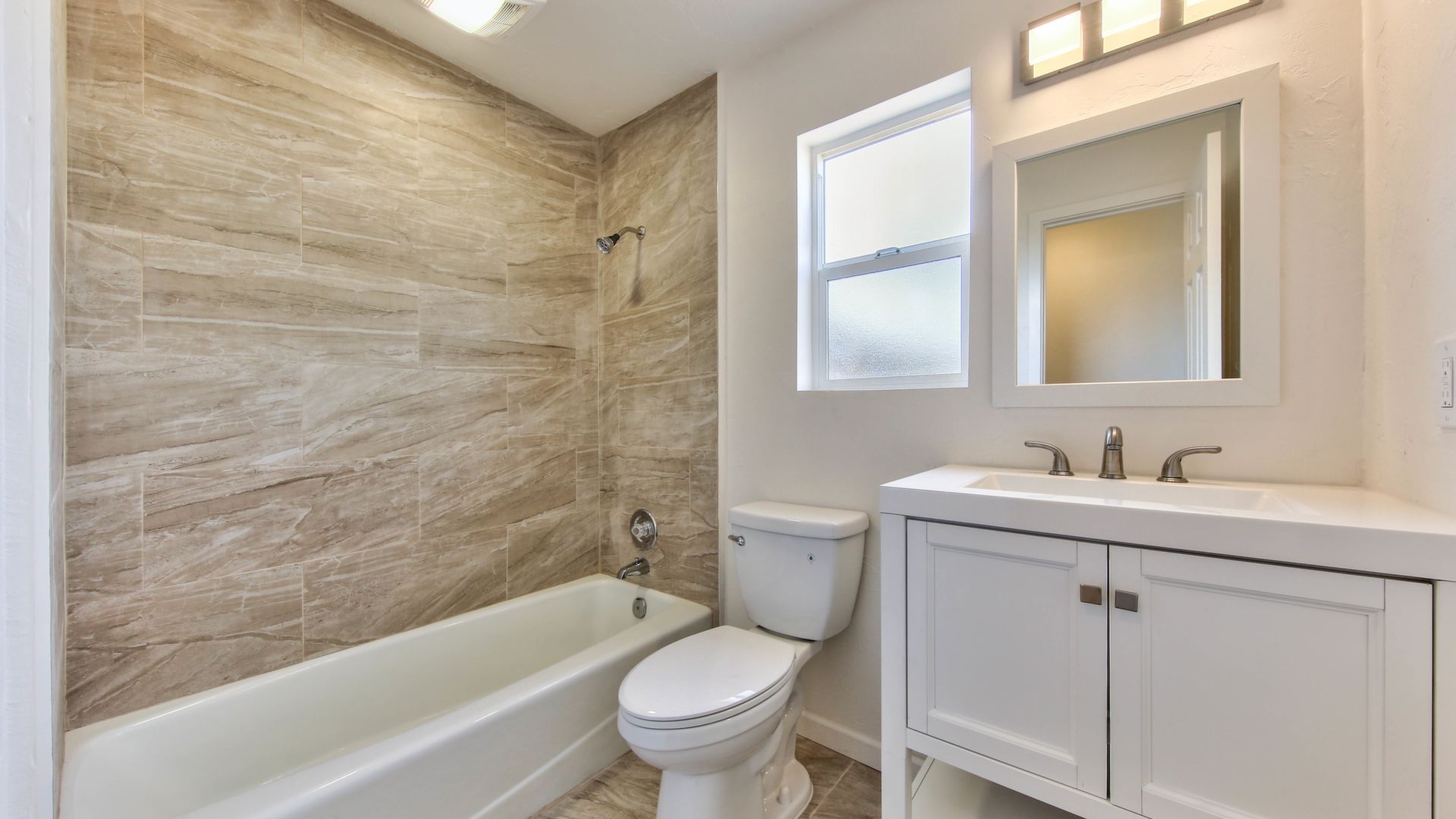Building an ADU with a loft is easier than you think
Here are some basic things to keep in mind when considering building a loft in your ADU
ADU construction methods for building a loft in an ADU aren't much different from building a loft in any other space except for the square footage limitations intrinsic to ADUs (loft regulations differ for ADUs over and under 400 square feet, as well as for loft floor areas over and under 200 square feet). In order to use a loft for sleeping an egress window is required for lofts of all sizes in ADUs and generally there is a 7 foot ceiling height requirement for habitable space. Kitchen and bathroom lofts are required to have stairs, otherwise ladders are allowed with standards. (Lofts used only for storage and under 200 square feet won't count towards habitable space and can have ceilings lower than 5 feet.)
Loft Stairs
Stairways must be wider than 20 inches with 7 inch treads and 12 inch risers (7 inches and not more than 12 inches in height). A landing platform is required when there isn't enough headroom at the top of the stairs, measuring at least 18 inches to 22 inches in depth (from the nosing of the landing platform to the edge of the loft), and 16 to 18 inches in height (measured from the landing platform to the loft floor on the top tread). Stairs will need handrails and guards.
Loft Ladders
Many homeowners choose to use ladders to access loft spaces which saves time and money during construction as well as space, but keep in mind that stairs are somewhat more accessible for mobility limited people. Ladders come in a variety of styles such as ship's ladders and alternating treads. Minimum rung widths are 12 inches with 10 to 14 inch spacing between rungs, and must be installed at 70 to 80 degrees from the horizontal plane. There needs to be at least 20 inches open space beneath the rails.
Ship's Ladders
Ship ladders need 8.5 inch and 9.5 inch risers and handrails on both sides of the ladder. Alternating tread devices require a minimum tread depth of 8.5 inches and a tread width of greater than 7 inches, with riser heights not more than 9.5 inches and alternating steps resulting in an angle of ascent between 50 and 70 degrees and handrails on both sides.
Small ADU (under 400 square feet) with sleeping lofts
For ADUs less than 400 square feet loft provisions allow for more compact designs for stairs or ship ladders. When using a loft for sleeping, a minimum of 35 square feet with a minimum length on any side of 5 feet and a height-from-loft-floor-to-ceiling of at least 3 feet is needed. If the space beneath the loft is for anything other than storage, there is a minimum ground floor ceiling height of at least 7 feet. Guardrails are required on the open side of lofts.
Large ADU (400 square feet+) with small sleeping loft (under 200 square feet)
Small lofts in larger ADUS can't take up more than one-third of the floor area of the room they're located in and are also required to have 7 foot room ceiling height minimums for each level, with sloped loft ceiling heights allowed to slope from a minimum of 5 feet as long as at least half the lofted area is 7 feet or greater. For larger lofts, both ship's ladders and alternating tread devices are allowed.
Large ADU (400 square feet+) with large loft (200 square feet+)
Larger lofts do contribute to floor areas and can be considered a second floor, but are allowed for sleeping (meaning they also need an egress window for fire safety). For sloped ceilings, ceiling heights are allowed to slope from a minimum of 5 feet as long as at least half the lofted area is 7 feet or greater. 
* This is a guide based on state standards. For more details contact your local jurisdiction. Each city has their own interpretation of loft requirements, it may be more or less restrictive.
** Please use the California Residential Code or your local ordinance for legal information.


